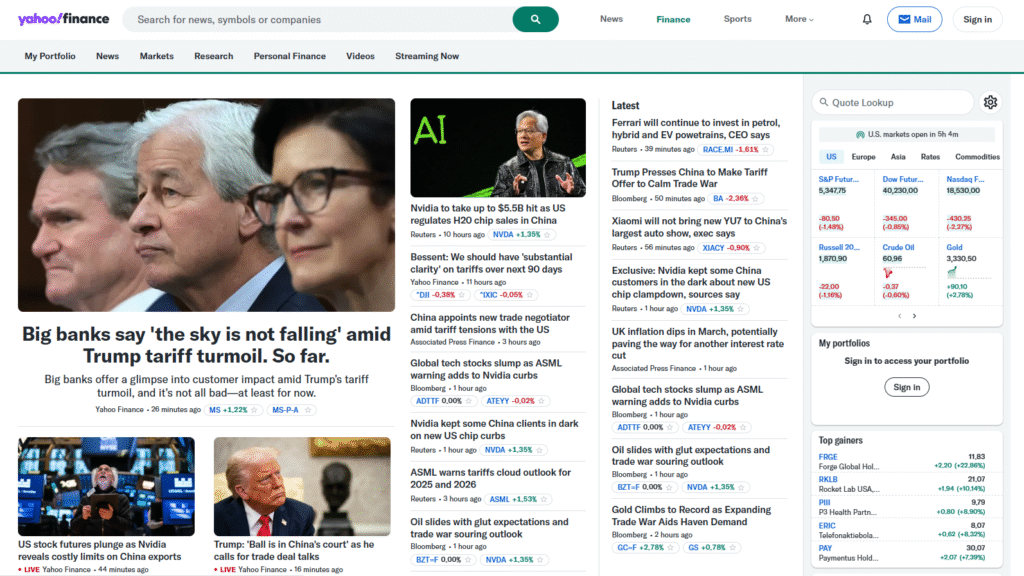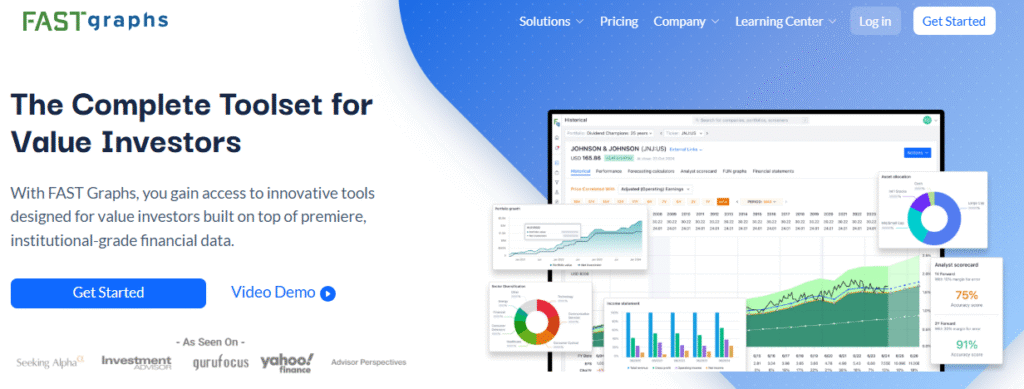For More Free Videos, Subscribe to the Rhodes Brothers YouTube Channel.
Living off dividends is one of the most attractive paths to financial freedom—but it’s also one of the most misunderstood. The idea of waking up each month to see cash automatically hit your account, without lifting a finger, is incredibly appealing. But there’s a catch: most people approach dividend investing the wrong way.
Successfully living off dividends isn’t about chasing the highest yields or stuffing your portfolio with popular dividend stocks. It’s about smart strategy, minimizing risk, and keeping more of what you earn.
In this post, we’ll break down:
- The exact pitfalls to avoid if you want to retire on dividends
- How to build a reliable dividend income stream
- Tools and strategies to help you stay on track
- Real-world examples and expert insights
- A step-by-step guide to get started the right way
John S. Rhodes of the Rhodes Brothers YouTube Channel puts it simply:
“If you’re investing for income, the last thing you want to do is kill the goose that lays the golden egg. Fees, bad timing, and poor planning do exactly that.”
Let’s dive in and make sure you don’t fall into those traps.
TL;DR
- Don’t chase high dividend yields—they’re often risky and unstable.
- Focus on dividend growth investing for long-term, sustainable income.
- Avoid high-fee funds and dividend traps that erode your returns.
- Use tools like Dividend.com, Portfolio Visualizer, and Morningstar to analyze dividend stocks and ETFs.
- Reinvest your dividends early, then transition to distributions as you near retirement.
- Monitor your portfolio and adjust for inflation, tax-efficiency, and income sustainability.
How Dividend Investing Really Works
Dividend investing isn’t just for retirees—it’s one of the most practical, time-tested ways to generate passive income and build long-term wealth. Whether you’re aiming for financial independence or just want extra income without selling your investments, understanding how dividends work is the first step.
What Are Dividends?
Dividends are cash payments made by companies to their shareholders, usually drawn from profits. They’re a way for companies to share their earnings with investors, and they can be a powerful source of passive income.
Most dividends are paid quarterly, though some companies and funds pay monthly. You can receive dividends from:
- Individual stocks – Reliable dividend payers like Johnson & Johnson (JNJ) or Coca-Cola (KO) have long histories of consistent payouts.
- Dividend-focused ETFs – Funds like SCHD (Schwab U.S. Dividend Equity ETF) or VIG (Vanguard Dividend Appreciation ETF) offer diversification and steady dividend income.
- REITs (Real Estate Investment Trusts) – Companies like Realty Income (O) and ETFs like VNQ pay higher yields, often monthly, by law, as they must return 90% of taxable income to shareholders.
If built correctly, a dividend portfolio can generate predictable, recurring income without needing to sell off shares—perfect for retirees or those pursuing FIRE (Financial Independence, Retire Early).
Tools to Track and Analyze Dividends

- Dividend.com – Track dividend history, yield, and ex-dividend dates.
- Seeking Alpha Dividend Scorecard – Offers dividend safety grades and payout history.
- Yahoo Finance – Great for checking dividend yield, payout ratio, and upcoming pay dates.
- Simply Safe Dividends – Provides a dividend safety rating and income tracking dashboard.
Why Chasing High Yields Can Backfire
A big mistake new dividend investors make is chasing high dividend yields—looking for stocks that advertise 7%, 8%, or even 10% returns. While those payouts might look attractive on paper, they often come with hidden landmines.
Here’s why you should be cautious:
- High yields often signal red flags. The company may be struggling financially, taking on debt to maintain payouts, or in a declining industry.
- Dividend cuts are common. Companies offering unsustainably high yields are more likely to slash their dividends, which can tank the stock price.
- Capital erosion is real. A 9% yield doesn’t matter if the stock price drops 30%—you’re losing money overall.
Watch Out For:
- Payout ratios above 100% – This means the company is paying more in dividends than it earns.
- Negative earnings trends – If the financials are declining, the dividend might not last.
- Unsustainable debt – High debt levels often lead to dividend cuts in downturns.
Tools to Spot Dividend Traps:

- Morningstar Premium – Deep dive into financial health and risk ratings.
- FastGraphs – Visual performance and valuation charts, including earnings vs. dividends.
- Finviz – A free screener to filter out stocks with high debt, low earnings growth, or overvaluation.
A Better Alternative: Dividend Growth Investing
Dividend growth investing is a more sustainable and proven strategy. Instead of maximizing yield, you invest in companies that consistently raise their dividends over time—even if the starting yield is modest.
These companies are often:
- Financially sound
- Have growing earnings
- Prioritize long-term shareholder returns
The magic here is compounding. Over time, small dividend increases build up, and if you’re reinvesting dividends during your accumulation phase, your portfolio snowballs.
Real-World Examples:
- Procter & Gamble (PG)
- Yield: ~2.5%
- Raised dividends for 67 consecutive years
- Strong brand portfolio and recession-resistant
- Microsoft (MSFT)
- Lower yield (~0.8%)
- Rapid dividend growth and massive free cash flow
- Tech giant with strong pricing power
“Do not save what is left after spending, but spend what is left after saving.” – Warren Buffett
That’s exactly what dividend growth investing is about—build wealth first, then enjoy the income later. It’s a long-term mindset that rewards patience and consistency.
Bonus: Dividend Growth ETFs to Consider
- VIG (Vanguard Dividend Appreciation ETF) – Tracks companies with 10+ years of dividend growth.
- DGRO (iShares Core Dividend Growth ETF) – Focuses on companies with sustainable payout ratios and dividend increases.
- NOBL (ProShares S&P 500 Dividend Aristocrats ETF) – Invests in companies with 25+ years of dividend raises.
These ETFs offer diversification, low fees, and a solid foundation for dividend growth investors.
Actionable Steps to Live Off Dividends (Without Regret)
To live off dividends comfortably and sustainably, you need to start with a clear plan and the right tools. First, define your income goal. For example, if you want $40,000 per year in dividend income, you’ll need to reverse-engineer your portfolio. Assuming an average dividend yield of 3.5%, you’d need roughly $1.15 million invested. Tools like Portfolio Visualizer and Fidelity’s Retirement Income Planner can help you model different yield scenarios and see how much capital you’ll realistically need.
Once you have your goal, it’s important to choose the right mix of assets. Relying on one or two high-yield stocks is risky and can backfire. Instead, diversify your holdings with a blend of Dividend Aristocrats—companies with 25+ years of dividend increases—and dividend-focused ETFs like SCHD (yield ~3.5%, low fees), VIG (focused on growth, yield ~2%), and JEPI (higher yield ~7–9%, but with a more complex covered call strategy). Add REITs like Realty Income (O) for monthly payouts and VNQ for diversified real estate exposure.
During your accumulation phase (typically your 20s to 40s), the best move is to reinvest your dividends. This compounds your growth and builds your income-generating base faster. You can automate this by enrolling in Dividend Reinvestment Plans (DRIPs) or using platforms like Fidelity and M1 Finance, which offer auto-reinvestment features.
As you near retirement, your strategy should shift to withdrawals, using the dividends as cash flow rather than reinvesting them. But to keep more of your income, focus on tax-efficiency. Hold dividend stocks and ETFs in Roth IRAs or 401(k)s to defer or eliminate taxes. In taxable accounts, qualified dividends are usually taxed at 0–15%, but income from REITs or high-yield funds may be taxed as ordinary income. Use tools like TurboTax, SmartAsset’s Tax Calculator, or consult a CPA to build a tax-smart strategy.
Finally, don’t just set your portfolio and forget it. Review it annually to stay aligned with your goals. Inflation, company earnings, and dividend policies change, so you need to monitor your portfolio’s dividend coverage ratios, earnings growth, sector allocation, and total return—not just the yield. Platforms like Morningstar Premium, Simply Safe Dividends, and Seeking Alpha’s Dividend Scorecard can help you track performance and spot red flags before they derail your plan.
By following these steps, you’ll be on a solid path to building a dividend portfolio that can support your lifestyle—without the stress of selling assets or worrying about running out of money.
Common Mistakes to Avoid
Building a dividend income stream is a rewarding journey—but it’s also littered with pitfalls that can quietly sabotage your long-term goals. Many investors, especially those new to dividend investing, make decisions based on short-term appeal or misleading signals, rather than long-term sustainability. Here’s a deeper dive into the most common mistakes—and how to avoid them with confidence and clarity.
Mistake #1: Chasing Yield
This is the most common trap—and often the most dangerous. A stock or fund offering a 9%+ yield can look irresistible, especially when compared to the 2–4% range most blue-chip dividend stocks offer. But high yield often signals high risk.
A company may inflate its dividend to attract investors while ignoring its declining financials. These are often referred to as dividend traps—situations where the yield looks great, but the underlying business is deteriorating. Once earnings can’t keep up, the company is forced to cut the dividend, and the stock price usually plummets alongside it.
Avoid this by:
Using tools like Simply Safe Dividends or Dividend.com, which provide dividend safety scores, payout ratios, and earnings trends. Look for yields in a sustainable range (2–5%) backed by solid fundamentals and a healthy payout ratio (generally below 60%).
Mistake #2: Ignoring Total Return
Many investors focus only on the dividend income and overlook the total return, which includes capital appreciation plus dividend income. Earning 4% in dividends is great, but if the stock is losing 5% in value annually, you’re actually losing money.
A good dividend strategy doesn’t just generate income—it also preserves and grows your capital. Over time, companies with consistent dividend growth tend to outperform high-yield, low-growth stocks because they’re reinvesting in the business, growing earnings, and increasing shareholder value.
Avoid this by:
Evaluating both dividend yield and stock performance. Use platforms like Morningstar, Yahoo Finance, and Portfolio Visualizer to analyze long-term returns, volatility, and performance vs. benchmarks.
Mistake #3: Overconcentration
It’s tempting to fill your portfolio with high-yield sectors like energy, utilities, or real estate. While these sectors are known for dividends, relying too heavily on any one can expose you to sector-specific risks—like oil price crashes or rising interest rates.
For example, during the COVID-19 downturn, many REITs and energy stocks cut or suspended dividends, leaving income-focused investors scrambling. A well-diversified portfolio across multiple sectors and geographies is far more resilient.
Avoid this by:
Allocating your portfolio across dividend-paying sectors like healthcare, consumer staples, technology, industrials, and financials. Use tools like ETFreplay or M1 Finance pies to build a diversified, balanced dividend strategy.
Mistake #4: Forgetting Inflation
Inflation quietly erodes purchasing power over time. If your dividend income stays flat while prices rise, your lifestyle shrinks. A $40,000/year income today won’t stretch nearly as far 20 years from now if it doesn’t grow with inflation.
This is why dividend growth is so crucial. Companies that consistently raise their dividends—even at a modest 5–7% annually—help protect your income from inflation’s bite.
Avoid this by:
Prioritizing dividend growth stocks and ETFs like VIG or DGRO, which focus on companies that increase dividends year after year. Also, track your real income growth (after inflation) using calculators from SmartAsset or Fidelity.
Mistake #5: Skipping a Withdrawal Strategy
Many investors spend years building their portfolios but never develop a clear withdrawal plan. Will you live off dividends exclusively? Will you sell shares in bear markets or rebalance annually to fund income? Without a strategy, it’s easy to withdraw inefficiently, sell at the wrong time, or create a tax headache.
The most effective income strategies combine dividends + strategic withdrawals, allowing you to optimize taxes, manage cash flow, and preserve long-term growth.
Avoid this by:
Creating a retirement income game plan. Use tools like Fidelity’s Retirement Income Planner, NewRetirement, or consult a fee-only financial planner to build a strategy that includes:
- How much income you’ll need
- When you’ll tap into dividends
- How and when to sell shares
- What accounts to draw from first (Roth, IRA, taxable)
Frequently Asked Questions
How do I get started with dividend investing?
Start by opening an account with a low-cost broker (Fidelity, Schwab, M1 Finance), then invest in low-fee dividend ETFs or a few individual dividend growth stocks.
What’s a safe dividend yield?
Between 2% and 4% is generally considered sustainable for long-term investing.
How much money do I need to live off dividends?
Divide your annual income goal by your expected portfolio yield. For $50,000/year at 4% yield, you’ll need around $1.25 million.
Are dividend stocks safe?
Not always. Focus on companies with a long history of increasing payouts and strong financials.
Should I reinvest dividends?
Yes—especially in your early years. Reinvesting compounds your growth and builds income faster.
What are the best dividend ETFs?
SCHD, VIG, and DGRO are among the top choices for their balance of yield, growth, and low fees.
Are REITs good for dividend income?
Yes, but they’re taxed differently and can be volatile. Use REITs in tax-advantaged accounts when possible.
Can I live off dividends alone?
Yes, with the right planning. But it often works best when combined with other income sources like Social Security or annuities.
How often do dividends pay out?
Most pay quarterly. Some, like Realty Income (O), pay monthly.
How do taxes affect dividend income?
It depends on the type of account. Qualified dividends in taxable accounts have favorable rates, while others are taxed as regular income.
Don’t Let the Wrong Strategy Cost You Everything
Living off dividends is absolutely possible—but only if you approach it with clarity, discipline, and the right tools. The biggest mistake you can make is to chase income without protecting your capital.
Start with a solid foundation, reinvest early, diversify across stable companies and ETFs, and always remember: your strategy should be built for the long haul.
Get started today by reviewing your portfolio or opening an account with a low-fee brokerage. The sooner you start, the more your dividends will work for you.
Thanks for checking out this article. Be sure to subscribe to the Rhodes Brothers YouTube Channel for more expert advice on dividend investing and building wealth the smart way.
Resource List
Books
- The Little Book of Big Dividends by Charles B. Carlson
- The Single Best Investment by Lowell Miller
- Dividends Still Don’t Lie by Kelley Wright
- The Bogleheads’ Guide to Retirement Planning by Taylor Larimore et al.
Tools & Calculators
- Dividend.com – Track payouts, yield, and dividend growth
- Portfolio Visualizer – Backtest dividend portfolios
- Morningstar Premium – In-depth stock and ETF research
- Simply Safe Dividends – Dividend safety scores and income planning
- M1 Finance – Commission-free investing with auto-dividend reinvestment
Podcasts & Courses
- The Dividend Guy Podcast
- BiggerPockets Money
- Investing for Beginners Podcast
- Coursera: Financial Planning for Young Adults
- Udemy: Dividend Growth Investing for Beginners



